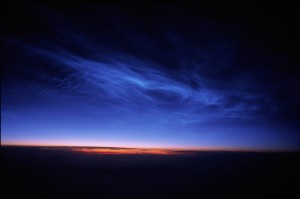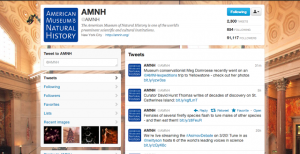This week I was lucky enough to be among the attendees at a conference called Science Writing in the Age of Denial, hosted here at the University of Wisconsin-Madison. What a great experience. Truly I couldn’t say enough to thank all of the organizers, speakers, panelists, and other attendees for all of the thoughtful discussion. For those of you who aren’t as familiar with the concept of science denial, it is simply the idea that despite scientific evidence that certain things are true (evolution, climate change, there is no autism/vaccine link, etc.) people will still claim (sometimes with serious vitriol) that science is wrong. This happens because the scientific evidence questions their world view or the mental model they have in place for understanding an issue.
I just wanted to share a few of the thoughts and ideas from the conference that I’m walking away with:
Respect is key. Our job as communicators is not to slap people around, name call, or put them down for thinking a certain way. Calling someone an idiot isn’t a good way to get them to take your point of view seriously. It is our job to communicate facts and evidence in a way that is compelling and approachable. I thought Dan Fagin from NYU’s SHERP program put it brilliantly when he said that as science writers we can’t stay walled off in our castle, acting like we’re on the defensive from the attacking hoard. We need to come down and really open up a dialogue if we want to make any progress.
We can not change minds with facts alone. It is our job to tell our audience a good story. A good story has the power to change minds. Telling scientific stories in a narrative way is one of the best ways we can go about trying to communicate about these controversial issues. Narrative is what will hook people, and hopefully get them thinking critically about issues and avoid them shutting down from the start simply based on the topic.
As science writers we have a tremendous ability to do harm. It could not be more important that we do our homework, and tell stories with all the nuance and shades of grey required to tell them accurately. For me this point was really driven home by Ivan Oransky, co-founder of the blog Retraction Watch, when he said that a all science/medical writers should have a biostatistician in their back pocket. It is unacceptable to spread misinformation because you as the writer didn’t understand it in the first place. We need to be reading the papers (including the graphs and methods) and asking questions of the researchers or qualified third party sources if we are unclear about something.
One of the most important things we can do for our audience is help educate those who are unfamiliar with the scientific process about how it all works. Deborah Blum raised this point, and pointed out that the problem with claiming a scientific consensus about a topic is that over the course of history scientific consensus about any number of issues has been revised. This is inherent in the nature of science, a constant search for new information is bound to result in new information. Sometimes this new information will confirm the previous conclusions, sometimes it will contradict and present more questions. This isn’t a reason to distrust what all scientists say, or to distrust conclusions for which there may be unanswered questions but for which there is very little contradictory evidence. We need to help the public understand that uncertainty is inherent in scientific research. Uncertainty doesn’t mean that scientists are liars, because unsure is not the same as false. The more we can do to help make the public comfortable with the scientific process, the more likely we are to help them learn to trust it.
We need to try to understand our audience. Knowing where your audience is coming from and what is driving their perspective is critical to being able to communicate ideas to them. You won’t change minds if you don’t establish an ongoing dialogue that addresses their point of view.
Another point I thought was really important was that the best way to help dispel misinformation is to stop repeating it. Articles like, “the top five misconceptions about climate change” just help keep the misinformation in the public eye. We need to focus on truth. I thought this was perfectly captured with the example of asking the audience who originally said the quote “I can see Russia from my house” I was among the people who thought Sarah Palin, but the real answer is Tina Fey. Palin made a comment about having foreign policy experience due to the proximity of Alaska to Russia, and Fey made fun of it by saying the above quote in a skit on Saturday Night Live. Palin never actually said it, but it has been repeated so much that it has taken on a life of its own. Thus, the misinformation lives on.
Those are just a few of the ideas I’ll be taking away from Science Writing in the Age of Denial. There were so many great sessions and panel discussions that I couldn’t possibly list every great idea and point here. If you are interested in what went on at the conference I seriously recommend checking out the twitter activity on the hashtags #denialconf and #sciencedenial. A lot of people were tweeting, myself included, and you will get a really great summary of what was said and went on. If you do check out the hashtags though, don’t be surprised to see some spam. We experienced several spam attacks throughout the conference.
I’ll close this post by just repeating my thanks to everyone who participated. I met some seriously fabulous writers (and only had one moment where I was freaking out in my brain trying to figure out what to say to someone so smart and famous). I had a great experience and I’m looking forward to hopefully meeting them, or at the very least reading more of their work, in the future. In the meantime I’ll be trying to incorporate the ideas and suggestions that came out of the conference into my own work.


